When it comes to nutritious food, you can't beat seasonal produce. Every month of the year brings with it a new offering of nutrient-dense veggies and fruits, as well as meat and seafood. Find out what seasonal foods to cook with your Instant Pot in July to lock in the most flavor and nutrients.
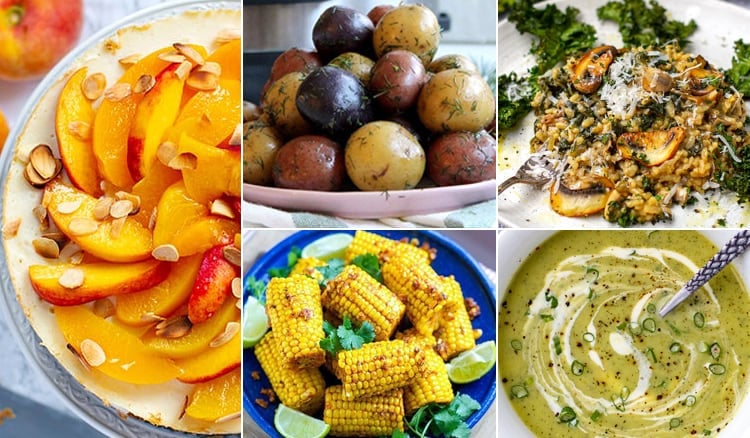
We're starting a new series of posts featuring seasonal recipes with your Instant Pot for each month of the year. We're covering the most common seasonal ingredients in the northern hemisphere and how they can be used in pressure cooking. Of course, not all seasonal foods are fit for this cooking method, so we're choosing those that are great to prepare with your Instant Pot pressure cooker.
Next up: What To Cook In You Instant Pot In August
What's In Season In July
Corn
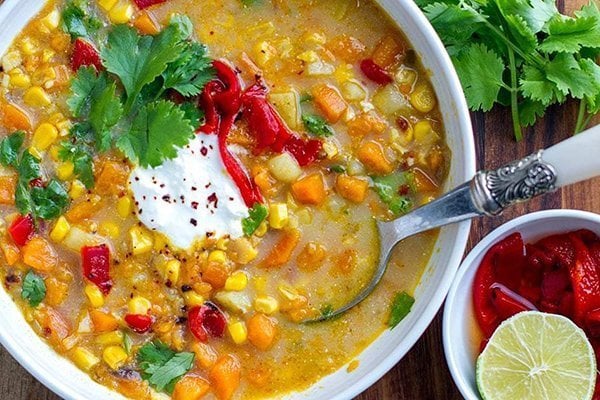
There is a lot of corn and several major types, including sweet corn (vegetable we eat), dent or “field” corn (animal feed and other industrial applications like ethanol), flour corn (used for cornmeal), and flint corn (known as Indian corn, often beautifully multicolored).
Sweet corn is available only in the summer and early fall. Because sweet corn is at its best when really, really fresh, try to seek out local corn from farmers markets or farm stands. The kernels do become starchier and less sweet the longer the ears are stored. Look for ears that are firm, plump and fairly unblemished. Contrary to popular belief, you do not have to strip the ears of their green husk before purchasing them (and in fact, this drives farmers crazy). Just gently squeeze down the length of the ear to feel for bald spots.
Corn is amazingly versatile. The ears can be grilled, boiled, steamed or roasted; the kernels can be creamed, made into pancakes, turned into relish, added to salsa and even churned into ice cream. You can even eat fresh kernels raw right off the cob.
Cornmeal is used to make tortillas, tamales, cornbread, corn dumplings, and corn pudding, among many, many other dishes from around the world. Hominy is made from corn kernels soaked in lime and is available dried or canned. Corn freezes well. Blanch the corn (easiest to do still on the cob) for 3-4 minutes in boiling water, and then quickly cool in an ice bath (ice plus water). Pat dry. Cut the kernels off the cob, place in freezer bags and freeze.
Fresh corn is a good source of Vitamin B6, thiamin, niacin, magnesium, iron and a number of other important minerals. Corn is also low in fat and high in dietary fiber and protein. Eating corn with beans provides all of the amino acids that humans need, as corn is high in methionine but lacking in lysine, while beans are high in lysine but lacking in methionine.
- Instant Pot Corn Sweet Potato & Chipotle Soup
- Instant Pot Corn On The Cob (With Cajun Butter & Lime)
- Chicken & Corn Soup With Spinach
- Yellow Rice with Peas and Corn
- Mac & Cheese With Corn
- Creamed Corn
- More Instant Pot Corn Recipes
Green beans
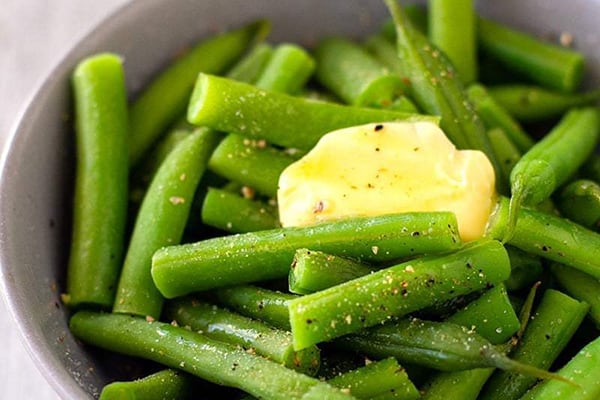
Green beans are the unripe, young fruit and protective pods of various cultivars of the common bean. Green beans are known by many common names, including French beans, string beans, snap beans, and snaps. Over 130 varieties of green beans are known.
Bush beans are short plants, growing to not more than 2 feet (61 cm) in height, often without requiring supports. They generally reach maturity and produce all of their fruit in a relatively short period of time, then cease to produce. Pole beans have a climbing habit and produce a twisting vine, which must be supported by "poles" or trellises. Green bean pods contained a "string", a hard fibrous strand running the length of one side of the pod. This string was either removed before cooking.
Green beans are eaten around the world, and are sold fresh, canned, and frozen. They can be eaten raw or steamed, boiled, stir-fried, or baked. They are commonly cooked in other dishes such as soups, stews, and casseroles. A popular dish is green bean casserole.
Nutritionally, green beans are a healthy vegetable as a good source of fiber, potassium, and folate, and are an excellent source of protein, iron, and zinc. They contain antioxidants similar to those found in green tea, also known as catechins, which can improve heart health and help prevent cancer and manage/prevent diabetes.
- Instant Pot Green Beans With Butter & Cracked Pepper
- Instant Pot Green Bean Casserole
- Instant Pot Potato Salad With Tangy Vinaigrette (Vegan, Gluten-Free)
- Turkish-style Instant Pot Braised Green Beans
Kale
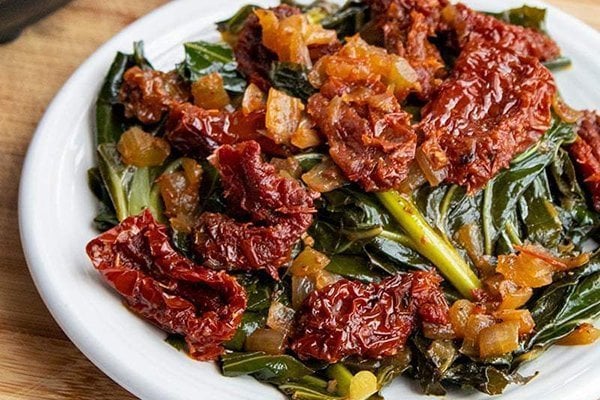
It's no news that leafy greens are good for you. We're talking kale, spinach, and collards here. Naturally gluten-free, all leafy greens are low in calories and carbohydrates yet can be quite satiating when consumed with a little added fat, which helps with vitamin absorption.
Both kale and collard greens contain substantial amounts of vitamin K and are rich in vitamin A, vitamin C, and manganese, and moderate sources of calcium and vitamin B6. Leafy greens are also high in iron and provide dietary fiber. Being low in calories and sugar, leafy greens are great for weight loss and healthy eating.
Depending on the hardiness of the leaves, greens can be cooked in a variety of ways. Spinach and other thin-leaf green veggies are great raw, while tougher kale and collards are best cooked. Instant Pot is great for cooking collard greens and kale as a side dish and you can add leafy greens to any stew, soup, curry, pasta or risotto you make in the pressure cooker.
- Collard Greens With Sun-Dried Tomatoes
- Zuppa Toscana (Tuscan Soup)
- Mushroom Risotto With Kale
- Kale & Quinoa Pilaf
- Instant Pot Kale Garlic Dal from Cook With Manali
- How to Cook Kale in 3 Minutes from Nora Cooks
Peppers
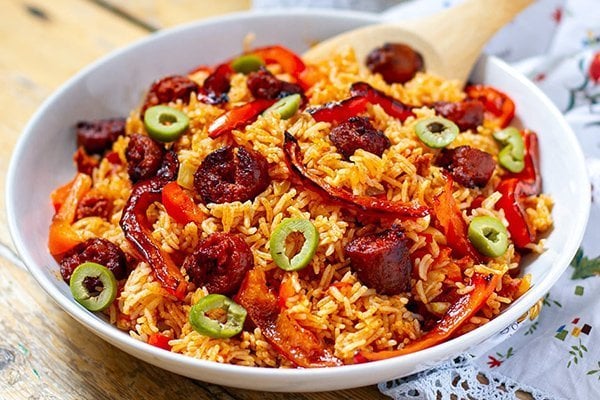
How hot do you like your food? In 1912, Wilbur Scoville developed what would become the Scoville scale, a measure of chile pepper “hotness.” The scale basically measures the amount of capsaicin, a chemical compound found in peppers that stimulates nerve endings, especially in the mucous membranes.
The chili pepper is probably indigenous to western South America, and eventually made its way to Mexico. Columbus was likely responsible for bringing the pepper to Europe. The Spanish and the Portuguese then spread the fruit to areas like India and Southeast Asia in the early 16th century.
Peppers come in a very wide range of shapes, colors, sizes and heat intensity. The mildest, sweetest peppers are the fruit of the bell pepper plant, which is found in a rainbow of colors, ranging from green to red to purple-black. All peppers should have very glossy, firm skin with no brown or mushy spots on the surface of the fruit. Dried whole peppers, used frequently in Mexican cooking, should also have glossy skin and should be free of brown or mouldy-looking spots.
You can store them in the refrigerator for up to a week. Make sure the pepper’s skin is totally dry before storing — moisture causes rapid deterioration. Many commercially grown peppers are coated in wax; this extends the storage life of the pepper (sometimes up to three weeks). You can also freeze them.
Peppers can be used raw in salads and as toppings for various dishes. They equally lovely roasted, stewed, pureed, stuffed and grilled. Peppers also pair well with their tomato, potato and eggplant cousins. Dried chiles, important in Mexican cuisine, have a depth of flavor very different from their fresh versions.
To diminish the intensity of chiles’ fiery burn in your dish, remove the ribs (aka the “placenta”) and the seeds of the pepper with a very sharp knife before cooking or eating raw. Wear gloves when working with hot peppers to avoid skin burns from the oils found in chiles. Be sure to wash cutting boards and knives that have come into contact with hot peppers with warm, soapy water to avoid a capsaicin-derived kitchen disaster.
The capsaicin in hot peppers is actually made up of a number of different chemical components, each with its own special way to burn. Some swear that consuming dairy (like a glass of milk) can diminish a chile’s burn; others recommend a spoonful of sugar or something sweet. Rice and ice water are still other common remedies. Whatever you do, do not down a carbonated beverage to relieve the pain — the bubbles enhance the burning.
In general, peppers are very high in Vitamins C and A and are good sources of folate, Vitamin B6, Vitamin E and fiber. Sweet peppers are far more nutritious when ripe, when allowed to turn from green to red, yellow or orange. Colorful peppers are also high in lycopene, a powerful antioxidant that may help diminish the risk of certain cancers.
The chemical compound capsaicin seems to increase the body’s metabolism, helping us store less fat and burn more energy. There is some speculation that chiles cause a mild euphoria due to the endorphins released from the pain of the chile’s burn, which may be why chile-eaters come back for more.
- Instant Pot Spanish Rice with Chorizo
- Instant Pot Potato Soup With Poblano Peppers
- Our Favourite Instant Pot Stuffed Peppers
- Instant Pot Peppers And Onions Fajitas from Melanie Cooks
- Award-Winning Instant Pot Chili Recipe from Oh Sweet Basil
- More Instant Pot Bell Pepper Recipes
Peas
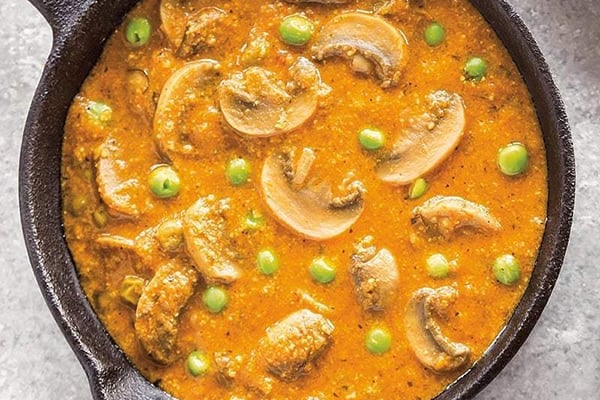
Peas are a type of legume native to the Middle East, specifically to the area around what is now Turkey and Iraq. From the Middle East, the legume spread rapidly to Europe. The pea was an important source of food for peasants in the Middle Ages, providing protein and other nutrients in lean times.
Snow peas and sugar snaps are often used in stir-fries, pairing with garlic, sesame oil, and soy sauce. Sugar snaps are also pretty excellent raw. Pea shoots and tendrils can be eaten like a green braised in a little bit of liquid, or sautéed, or tossed, raw, into salads. Dried peas (split peas) tend to break down quite a bit when cooked so they are great for Split pea soup using a chunk of a ham hock with the peas while the soup cooks.
When shopping for garden peas, look for pods that are plump and bright green, with no wilted or brown spots. All parts of the pea plant are edible from the shoots, tendrils, and leaves, flowers, pods and, of course, the seeds (the peas themselves).
Fresh peas in the pod will keep for at least a week in the produce drawer of your refrigerator. They will get starchier and less sweet the longer you wait to cook them. Even after a longer period of time, when the pods look a little gnarly, the peas inside are usually okay.
Every variety of pea is really good for you. Garden peas are higher in calories than most other veggies and are rich in fiber and protein. They also have huge amounts of Vitamins C, A, K and folate, and are high in manganese, iron, zinc, and magnesium. They even contain a little bit of calcium.
Dried peas (aka split peas) have even more protein and fiber than fresh peas and contain more folate and potassium than fresh. Snow peas and sugar snaps have a large amount of Vitamin C — just one cup provides you with 128 per cent of your daily Vitamin C needs. They’re also super high in Vitamins A and K and are good sources of iron and Vitamin B6.
Peas were key to the creation of the modern science of genetics: Gregor Mendel, an Austro-Hungarian monk, conducted the very first experiments on the inheritance of traits in pea plants, which lead to the formation his theory of inheritance, which basically forms the basis of all of genetics.
- Instant Pot Yellow Rice With Peas & Corn
- Instant Pot Curry With Mushroom & Peas (Matar Mushroom)
- Instant Pot Teriyaki Salmon & Peas
- Split Pea & Chorizo Soup
- Pea Soup With Pan-Fried Frankfurter Sausages
- Risotto With Celery & Peas
Potatoes (especially young potatoes)
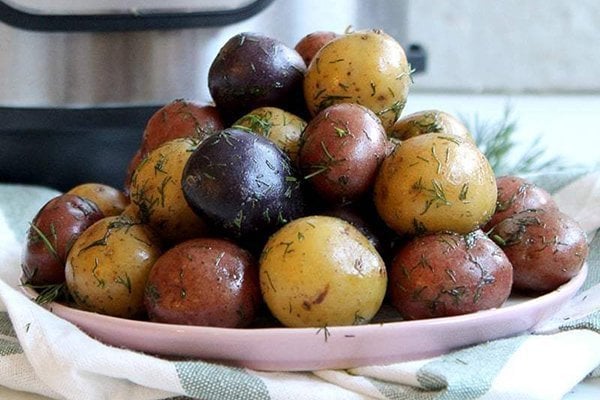
Is there anything better than hot french fries straight from the frier and handed to you in a red cardboard container? Maybe not the healthiest choice, but definitely a guilty pleasure. Potatoes originated in the highlands of Peru. Then the Spanish were the first Europeans to encounter them in the 16th century in Columbia, and later the British Isles and possibly to India.
By the 17th century, potatoes were critical in the Irish diet. But in the 1840s, potato blight struck Ireland, and a devastating famine was triggered which killed about a million Irish, and a million more emigrated to the US and other countries.
Potatoes are generally classified by color, texture and sometimes by shape. Some examples: russets (aka “baking” potatoes) tend to have a “dry” texture, red potatoes tend to be waxy or creamy, white potatoes tend to be creamy, yukons (aka yellow potatoes) tend to be a bit waxy and rich, purple potatoes tend to have a “dry” or “floury” texture, and fingerlings are finger-shaped or oval.
Store potatoes in a cool, dark place with low humidity (a basement is ideal). Kept dry and in a dark place, most potatoes will keep for at least a month and up to three months or you can freeze cooked potatoes.
Potatoes are really one of the most versatile vegetables in the kitchen. They can be baked, steamed, fried, pureed, mashed, stuffed, roasted, grilled and boiled. Fried potato dishes include the ubiquitous French fry, but also the classic American hash browns, Spanish patatas bravas, Swiss rösti (hash browns with an umlaut) and tater tots.
Italians make potato gnocci, Indians stuff potatoes into samosas and paratha, the French make potato gratins and pommes dauphine. The Irish mix cabbage into them or make potato pancakes. Germans make potato salad with bacon, onion, and vinegar; classic American potato salad has mayo and boiled eggs. Potato flour or mashed potatoes are also used in bread baking, donut making, and pastry dough, too.
Potatoes are actually pretty good for you. They are high in lots of vital nutrients, including Vitamin C, Vitamin B6, potassium, manganese and folate. Potatoes also have a fair amount of fiber, and even have good amounts of protein and iron.
- Instant Pot Baby Potatoes With Dill & Butter
- Instant Pot Chicken & Potatoes
- Instant Pot Potato Salad With Tangy Vinaigrette (Vegan, Gluten-Free)
- Loaded Mashed Potatoes
- Roast Chicken & Potatoes With Herb & Garlic Butter
- Cream Cheese Mashed Potatoes With Fresh Dill
- Stuffed Baked Potatoes 4 Ways
- Air Fryer Rosemary Potatoes
- 5 Ways To Cook Potatoes In The Instant Pot
Summer Squash
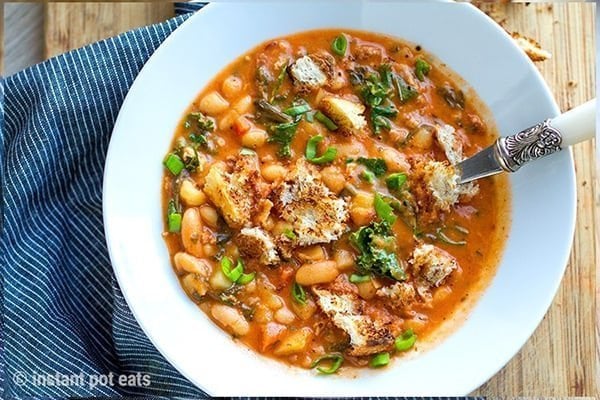
Zucchini is mild which means, it goes nicely with garlic, tomatoes, leafy herbs, olives, roasted peppers, onions, and various cheeses. Zucchini can be sautéed, batter fried, stuffed, grated, grilled, pureed and roasted. Zucchini can go into sweet dishes, too for an added healthy appeal. Avoid the dull and bruised zucchini when purchasing.
The zucchini is part of the extensive Cucurbitaceae family, which includes cucumber, watermelon and winter squash. Before Christopher Columbus brought squash seeds to Europe. Once in Europe, the Italians coined the big-boned relatives as zucca and its more petite kin as zucchini. Not until the 1920s did Italian immigrants bring back zucchini to America.
One cup of raw zucchini is just 18 calories. A rich source of Vitamins B-2, B-6, and C, potassium (great for blood pressure), zucchini also offers decent amounts of fiber and even a little bit of protein.
Keep zucchini refrigerated until ready to use; wrap in paper instead of plastic, which creates moisture. Zucchini should be used within two or three days of purchase. Otherwise, zucchini gets mushy and moldy. Zucchini goes bad quickly.
To keep it around a little longer (about three months), cut it into ½-inch pieces, blanch, and freeze. You can also slice it into thin rounds and dehydrate zucchini, or pickle it.
- 10-Minute Zucchini Noodles With Garlic, Lemon & Parmesan
- Turkey Chili With Sweet Kabocha Squash
- Thai Soup With Corn & Zucchini
- Creamy Zucchini Soup
- Chocolate Zucchini Cake
- Creamy Summer Squash and Basil Soup from Oatmeal with a Fork
- Instant Pot Broccoli Cheddar and Zucchini Soup from Half Baked Harvest
- Instant Pot Red Lentil Zucchini Dal from Carve Your Craving
- More Zucchini Recipes
Tomatoes
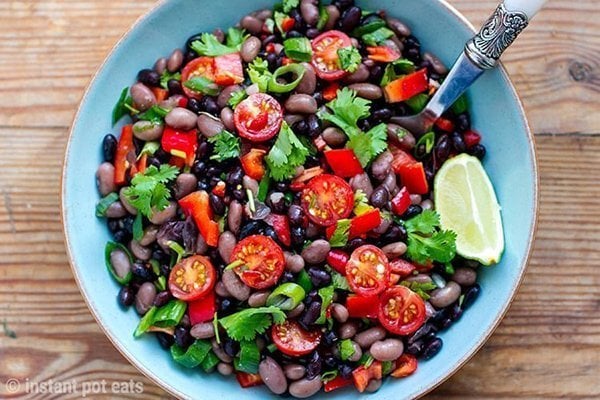
Is a tomato a vegetable? Botanically tomatoes are actually a fruit. The Aztecs grew them along with tomato relatives tomatillos and chile peppers. From Mexico, tomatoes spread to Spain in the 16th century. Tomatoes weren’t accepted as good eating until the 17th and 18th centuries, with Spain and Italy leading the way for future tomato world domination.
By the end of the 19th century, tomatoes were being canned in Italy and in the United States in vast quantities. Tomato ketchup, that most American of condiments, began to be produced commercially in the US by the 1830s.
Tomatoes come in a wide variety of shapes and colors, including purple, yellow, orange, and red. There are striped varieties of the fruit, as well as tomatoes that stay green even when ripe. For all tomato types, look for fruit that is unblemished and free from bruised or soft spots.
The fruit should be firm to the touch when gently squeezed. Keep your tomatoes on the counter instead of the refrigerator, with the exception of small cherry tomatoes. Tomatoes continue to ripen after being picked, so keep this in mind when selecting tomatoes at the market. If you are not going to use them for a couple of days, choose fruit that is on the firmer side and allow to ripen on the counter.
Tomatoes are extremely versatile in the kitchen and shine in many dishes, from sauces to salads to condiments. They are equally tasty raw and cooked, and can be stuffed, sautéed, roasted, dried, pickled or fried.
Other classic culinary combinations include pairing tomatoes with onions, garlic, basil, oregano and parsley. Tomato paste is a kitchen staple used in sauces, stews and other dishes. You can make sauce, paste or jam, then use a water bath canner to seal jars or freeze.
Tomatoes are low in calories, high in fiber and high in both Vitamins C and A. They are also good sources of Vitamin K, potassium and manganese. The fruit is also very high in lycopene, an antioxidant that has preliminarily been linked to cancer prevention, especially prostate cancer. Tomatoes are also rich in flavonoids, antioxidants with anti-inflammatory and anti-bacterial properties.
- Instant Pot Mexican Bean Salad
- Instant Pot Spaghetti Sauce (with Fresh Tomatoes) from Detoxinista
- Instant Pot Steamed Tomatoes from Recipe This
- Instant Pot Tomato Barley Risotto With Marinated Feta
- Fish Braised in Italian broth of Cherry Tomatoes
Summer Fruit & Berries
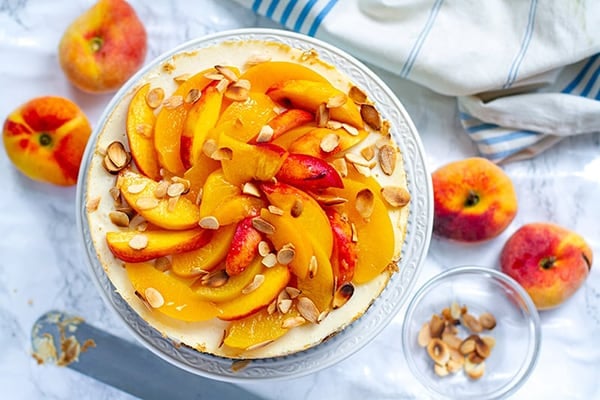
Plums
Plums are among the first domesticated fruits in central Asia and Europe. As for prunes — aka dried plums — the credit goes to Louis and Pierre Pelliers, two brothers who came from France in the mid-1800s to plant Agen prune plums which they grafted with wild American plum, resulting in the California prune.
No matter which variety you choose, you want taut, firm skin (versus swollen). No bruising, discolouration or soft spots. You’ll know your plum is ripe when it yields to a little pressure from your thumb. Unripe plums will ripen at home in a paper bag in the refrigerator.
Variety is the operative word here: Plums can be as small as a cherry (beach plum) and as big as a tennis ball (Santa Rosa), shaped like a football (Italian prunes) or squat, like a tomato (cherry plum). They come in shades of yellow (Mirabelle), Granny Smith apple green (greengage) or deep red with a green streak (Satsuma).
Flavors range from super tart to honeyed, floral to melon. They all have pits, which also vary in size, but most are freestone. Keep in the refrigerator, and in a paper bag if you some ripening assistance. Plums should be eaten within a few days of purchase.
You can eat plums out of hand, of course, but try grilling up a bunch of plums, halved and pitted and brushed with olive oil. Once they come off the heat, drizzle just a touch of honey, a squeeze of lime and some chopped basil. Or leave off the basil and top with a spoonful of Greek yoghurt.
Peach
From China, the peach travelled to Persia and then Greece, and into the rest of Europe, thanks to peach lover Alexander the Great. By the mid-1700s, Native Americans were planting peaches in the new colony of Georgia.
Peach flesh will be either yellow or white. Generally speaking, the white peach tends to be sweeter, while the yellow offers a slight tang and acidity. Whether or not you can pull a peach apart depends on whether it’s a freestone or a clingstone, the latter used for commercial canning.
When shopping, give your peach a smell. If you don’t catch a whiff of that signature perfume, a ready-to-eat peach should be fragrant. A good peach will also be tender and have some “give.” If a peach is rock hard, it’s probably been picked too early and best left alone.
Because the peach is so fragile and perishable, it is critical to select fruit that truly is free of blemishes and bruises. Keep in mind that the peach not only bruises easily but can mould even if rubbing up against each other.
Peaches go great in summer salads; try arugula for a twist to a dinner salad. Also works well when grilled, especially if it’s a little on the firm side. This adds some smoky notes and carnalizes the natural sugars in the fruit. Try pairing grilled peaches with goat cheese or drizzled with honey.
- Instant Pot Peach Cheesecake
- Blueberry Oatmeal With Maple Peanut Butter
- Instant Pot Low-Carb Berry Cheesecake from Ditch the Carbs
- Real Food Instant Pot Peach Crumble from Real Food Instant Pot Peach Crumble
- How to Make Peach Jam in the Instant Pot Maria Moore Nutrition
- Simple Instant Pot Plum Butter-THM E from The Healthy Milestone
- Instant Pot Cherry Clafoutis Recipe from Two Sleevers
- Pressure Cooker Cherry Compote from Pressure Cooking Today
For a full list of what's in season in June in the USA, check out this post: What’s In Season Around the Country: July
SAVE THIS POST TO PINTEREST
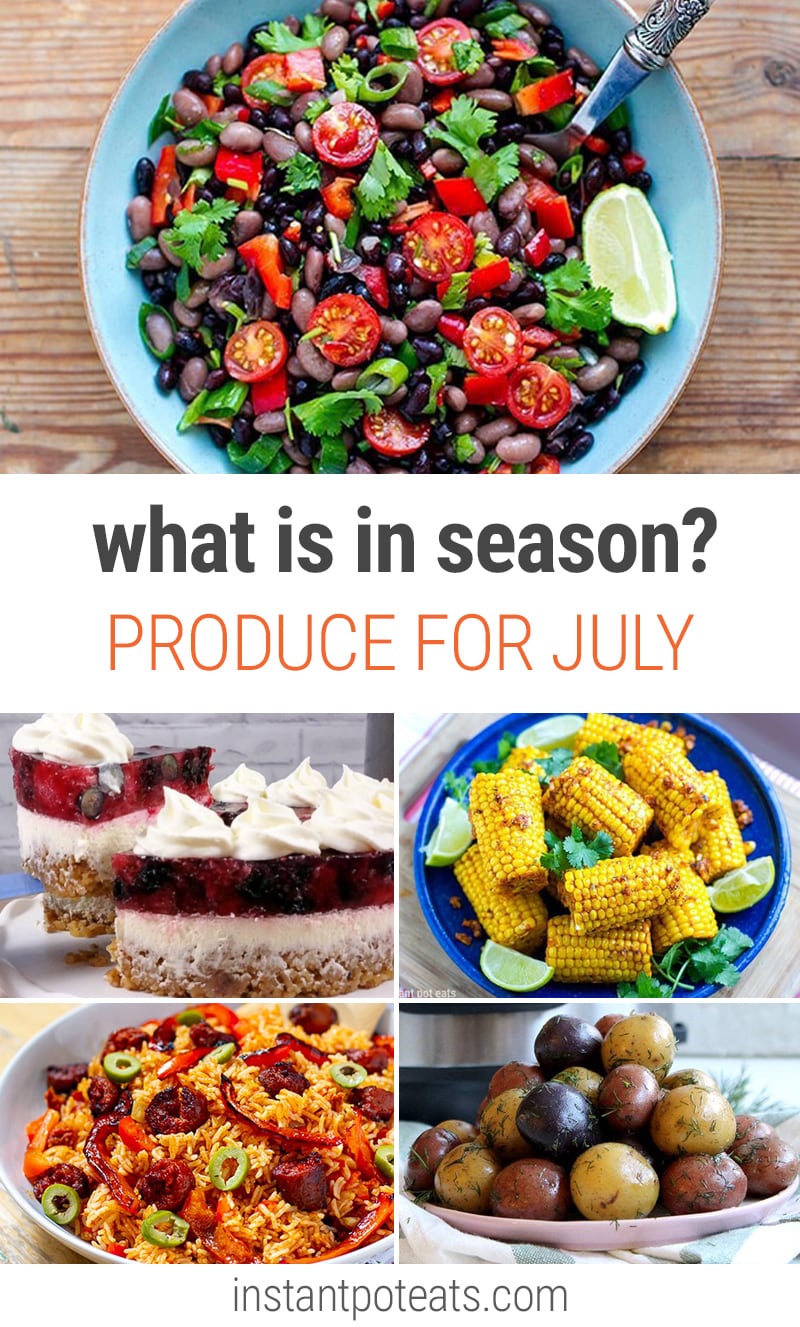



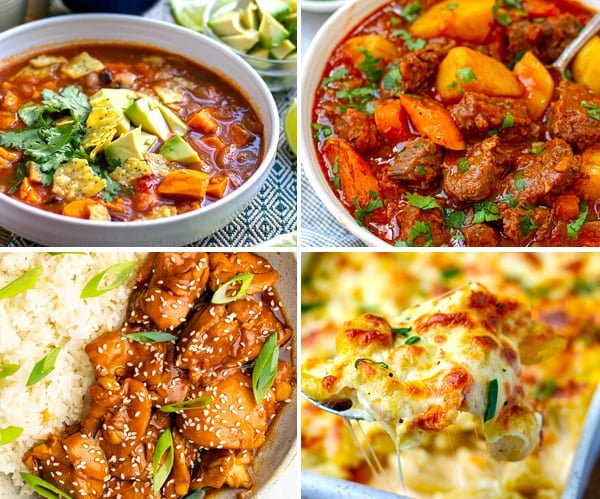
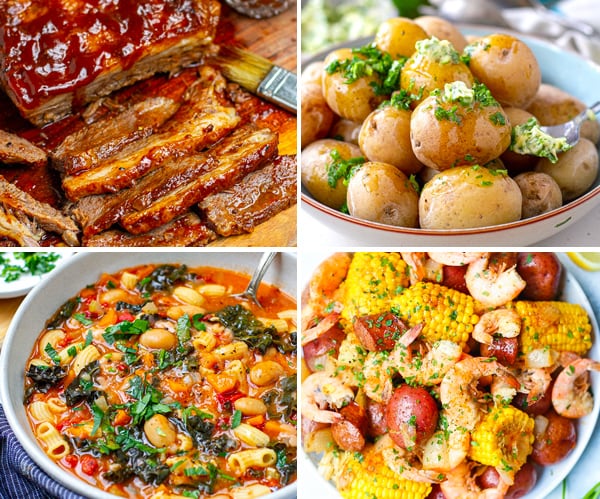
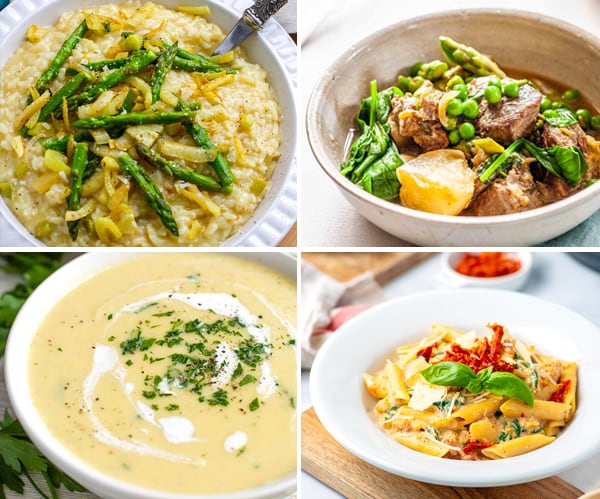
Barbara Schieving
So many delicious ideas!